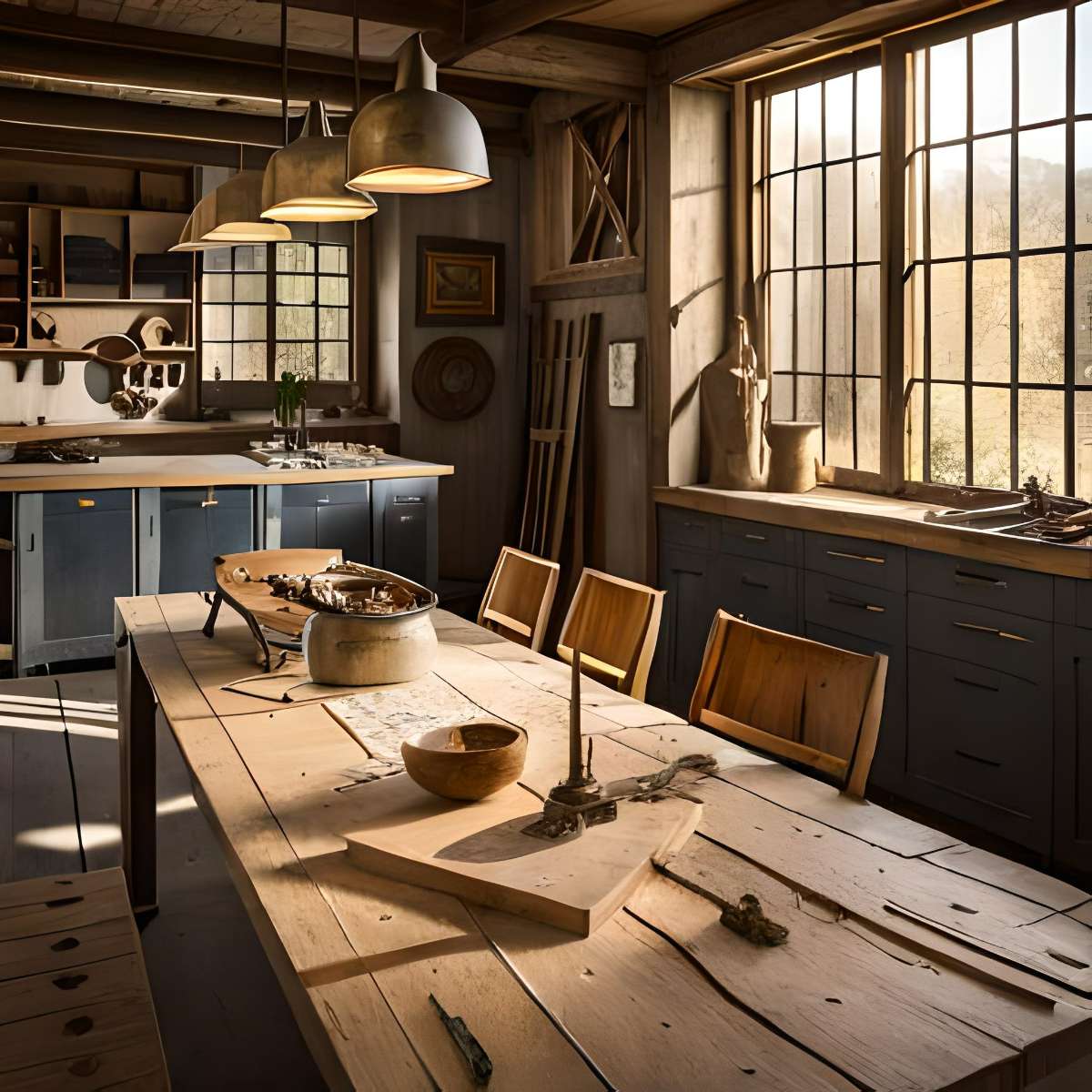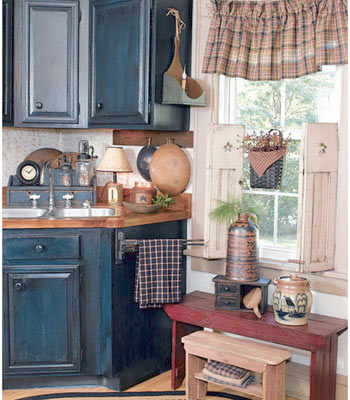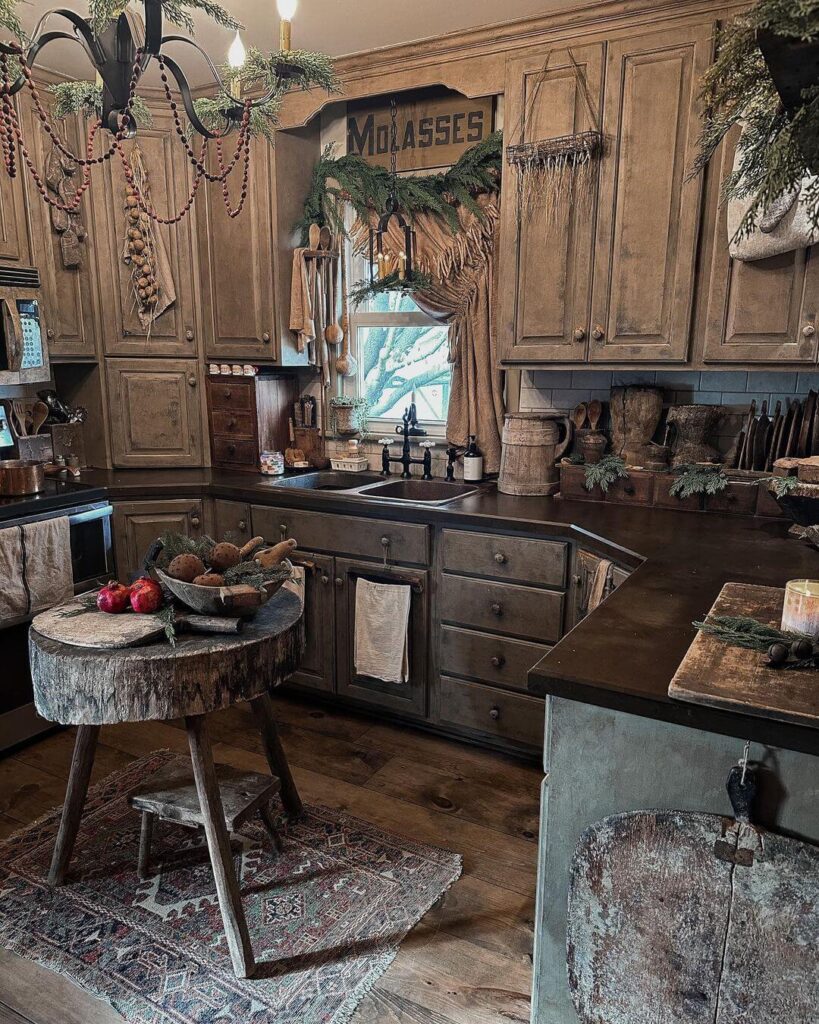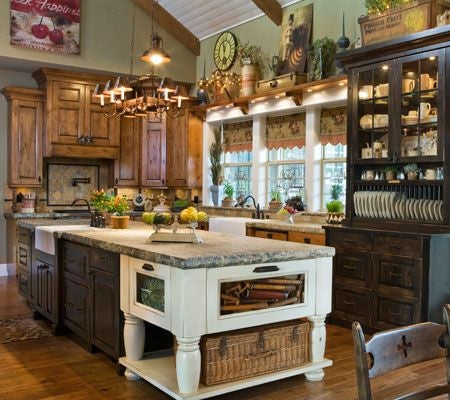Primitive decor is more than just a design choice; it’s a lifestyle that evokes warmth, nostalgia, and a sense of simplicity. If you’re seeking to create a kitchen that not only serves as a culinary hub but also as a cozy gathering place, embracing primitive decor may be your answer. In this article, we will explore various elements of primitive decor, provide insights from personal experience, and guide you through practical tips for incorporating this style into your kitchen.
What is Primitive Decor?
Primitive decor refers to a design style that emphasizes a rustic, handcrafted appearance often associated with early American homes. It celebrates the use of natural materials and simple forms, creating a warm, inviting environment. Think of weathered wood, handmade pottery, and vintage textiles. This style aims to evoke a sense of nostalgia and comfort, often reminding us of simpler times.
The Allure of Primitive Decor in the Kitchen
The kitchen is the heart of the home, and incorporating primitive decor can make this space feel even more inviting. Here are a few reasons why primitive decor works beautifully in kitchens:
- Warmth: The rustic elements create a cozy atmosphere perfect for family gatherings.
- Nostalgia: It evokes memories of family traditions and home-cooked meals.
- Uniqueness: Each piece often tells a story, making your kitchen uniquely yours.
Essential Elements of Primitive Kitchen Decor
1. Rustic Furniture
Choosing the right furniture is crucial in setting the primitive tone. Look for farmhouse tables, wooden benches, and ladder-back chairs. Reclaimed wood pieces can add character and charm.
Pros and Cons of Rustic Furniture
| Pros | Cons |
|---|---|
| Durability | Can be heavy and difficult to move |
| Unique character | May require maintenance to keep it looking its best |
| Timeless appeal | Limited designs compared to modern furniture |
2. Natural Textiles
Fabrics play a pivotal role in creating a primitive atmosphere. Opt for cotton tablecloths, linen curtains, and plaid or checkered patterns to enhance the rustic charm of your kitchen.
3. Vintage Accessories
Incorporate vintage accessories like weathered mason jars, antique baking tools, and rustic dishware. These items not only serve a practical purpose but also add layers of visual interest to your decor.

4. Earthy Color Palette
Stick to a palette of earthy tones such as browns, greens, and muted reds. These colors help to reinforce the warm and inviting nature of primitive design.
DIY Primitive Decor Ideas for Your Kitchen
Creating a primitive-style kitchen doesn’t always require an extensive budget. Here are some DIY ideas to help you achieve that rustic look on your own.

1. Create a Gallery Wall
Using vintage frames, photos of family gatherings, and rustic wall art can create a heartwarming gallery wall. You can even create your own art by painting or distressing wooden boards.
2. Repurposed Wooden Crates
Wooden crates can serve as ideal storage solutions. Stack them for a unique shelving unit or use them to organize kitchen items like spices or cookbooks.

3. Customize Your Lighting
Replace modern light fixtures with rustic lanterns or vintage chandeliers. You can even create your own using mason jars and fairy lights for a charming effect.
Finding the Right Balance: Primitive Decor vs. Modern Functionality
While primitive decor celebrates the past, it’s essential to ensure your kitchen is functional for modern living. Here are some tips on how to strike the right balance:
1. Blend Old and New
Mix primitive elements with modern appliances. For example, a sleek refrigerator can pair beautifully with a wooden farmhouse table.

2. Use Multi-Functional Pieces
Opt for furniture and decor that serves multiple purposes. A rustic bench can also provide storage for linens and kitchen tools.
3. Keep it Organized
A cluttered kitchen can detract from the beauty of primitive decor. Use baskets, crates, and jars to keep your space organized while maintaining that rustic charm.

Shopping for Primitive Decor: Where to Find the Best Pieces
When it comes to sourcing primitive decor items, consider these avenues:
1. Antique Stores and Flea Markets
These venues are treasure troves for finding unique and one-of-a-kind items that can elevate your kitchen’s look.
2. Online Marketplaces
Websites like Etsy and eBay offer a wide array of handmade and vintage items that fit primitive decor perfectly.

3. Local Craft Fairs
Support local artisans and discover unique handmade pieces at craft fairs and farmer’s markets.
Maintaining Your Primitive Decor Kitchen
Like any decor style, maintaining the beauty of your primitive kitchen requires some effort. Here are a few tips:

1. Regular Cleaning
Dust and dirt can accumulate quickly on rustic surfaces. Regularly dusting your furniture and decor items will keep them looking fresh.
2. Periodic Touch-Ups
Check for any wear and tear, especially on wooden surfaces. A simple sanding or application of wood oil can keep your pieces in good shape.
3. Seasonal Decor Changes
Switching out decorative items seasonally can keep your kitchen looking lively and inviting. Consider adding seasonal greenery, pillows, or table settings for a fresh look.
Frequently Asked Questions (FAQs)
1. What distinguishes primitive decor from other styles?
Primitive decor is characterized by its rustic, handmade appearance, often using natural materials and celebrating imperfections. It’s designed to evoke a sense of nostalgia and comfort, unlike more polished and modern decor styles.
2. Can primitive decor work in a small kitchen?
Absolutely! In a small kitchen, choose light colors and multi-functional furniture to maximize space while still achieving that warm, rustic feel.
3. How can I incorporate primitive decor into an existing modern kitchen?
You can blend primitive elements by adding rustic accessories, opting for vintage dishware, or incorporating a farmhouse dining table. The key is to mix and match while ensuring functionality remains intact.
4. Is primitive decor expensive?
Primitive decor can range in price. Antique stores or flea markets often have affordable options. DIY projects can also help you achieve this style without breaking the bank.
5. What are some common materials in primitive decor?
Common materials include reclaimed wood, natural fibers (like cotton and linen), metal, and ceramics. These materials contribute to the rustic, handmade feel characteristic of this decor style.
In conclusion, transforming your kitchen into a haven of primitive decor is not only achievable but also gratifying. By incorporating rustic elements, engaging in DIY projects, and maintaining a balance between old and new, you can create a kitchen that is both functional and steeped in the warmth and nostalgia of simpler times. So, roll up your sleeves, gather your favorite pieces, and embark on this delightful decorating journey!